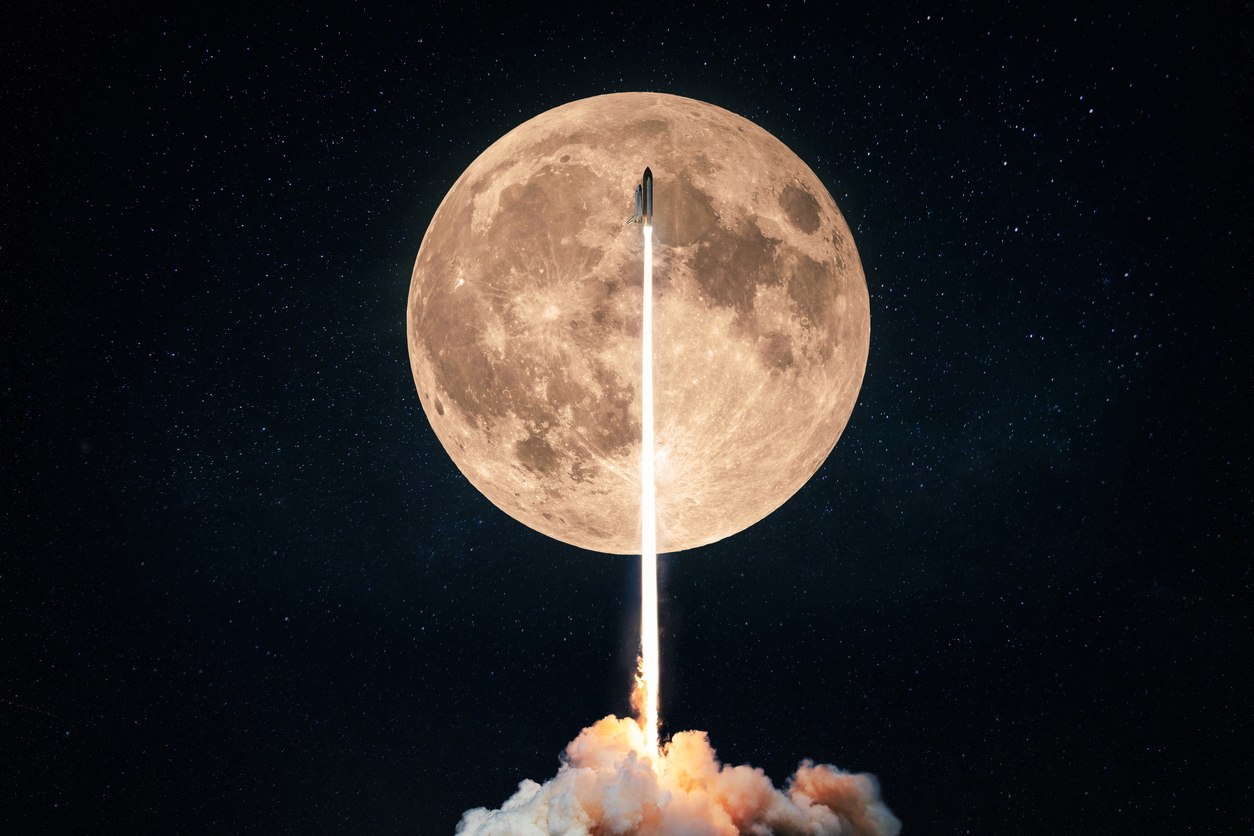In 1865, Jules Verne’s book, From the Earth to the Moon: A Direct Route in 97 Hours, 20 Minutes, fascinated the world. In it, he tells the tale of the Baltimore Gun Club building a massive cannon to launch three people into space and to the moon. Our fascination with the moon has never waned. And while it’s been a long time since any humans landed on the moon, visiting the celestial body is again center stage with at least a half dozen countries.
We now know that cannons like the one imagined by Verne won’t work, but that has not prevented advancing other exciting ideas of how we might propel satellites and people into space, including SpinLaunch, a California company that built a giant centrifuge to slingshot space vehicles into orbit and beyond. They’ve successfully done some sub-orbital launches but have not yet reached space.
Pivotal to the past success has been building a rocket powerful enough to launch heavy payloads into space to take them to the moon and possibly even return. In past years, several countries have successfully sent probes to the moon aboard rockets, but only China has gone and returned – twice, once returning from the near side of the moon and the other returning from the far side (the side of the moon we never see from Earth).
Now, China is taking a page from SpinLaunch by proposing the construction of a slingshot on the moon to toss lunar minerals back to Earth. One commentator described the $18 billion investment as a “magnetic levitation facility [that] will work like an Olympic hammer thrower by spinning before launching space material toward Earth,” possibly linked to China’s joint moon exploration and exploitation program with Russia.
China’s launcher primarily aims to extract helium-3, an isotope rare on Earth but believed to be abundant on the lunar surface, and use it to address energy problems here on Earth. It is thought that helium-3 can be used to create nuclear fusion, a clean form of atomic energy and a replacement for the far more dangerous use of nuclear fission to generate power.
China researchers claim that it would take only 20 tons of helium-3 to provide China’s power needs for a year. With two launches planned each day, it won’t take long for China to amass helium-3 in quantities sufficient to make it one of Earth’s most valuable strategic elements. While China claims it is close to completing the system, it has not released any information on when it might be deployed.
So, what is the point of caring about what China is doing, even if it might be farfetched? The fact is the U.S. is not doing anything as creative and long-term. Sure, the U.S. wants to send someone to the moon and return them safely. And NASA talks about a moon base. But China is well ahead of walking the walk and not just talking the talk. NASA and the U.S. Space Force, beware!
